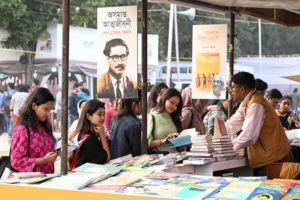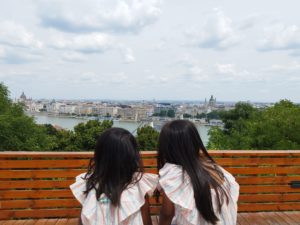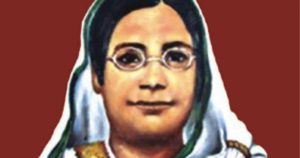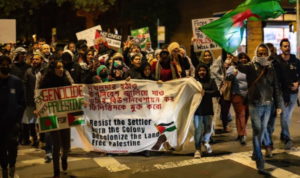Tracing the anti-black sentiments in parts of the Bengali community

Art by Iffy Kaysar
Blog by Kamrul Khan
How can we trace the anti-black sentiments we see ingrained in parts of the Bengali community?
Say you live in a majority Hasidic Jewish neighborhood and are driving one day, and get hit by a car; the chances of you getting hit by a driver who is a Hasidic Jew are high. Not because all Hasidic Jews are bad drivers, but because the majority in that neighborhood are Hasidic Jew. However, a narrative gets created that Hasidic Jews are bad drivers.
But it’s not true; it’s a basic probability.
For many Bengalis, a narrative has been ingrained in us that Blacks are more likely to commit crimes.
But it’s not true; it’s a basic probability.
The late 1980s and 1990s were the height of crime in big cities in the US. It also paralleled the height of immigration for Bangladeshis to the US. Most Bengalis immigrating to the US at this time moved into big cities in neighborhoods that were predominantly Black, such as Jamaica, Parkchester, and East New York.
When crime rates peaked in NYC, Bengalis found themselves in the most underprivileged parts of the city. If a Bengali person was mugged in one of these mostly Black neighborhoods, the chances of the mugger being Black was higher. This is not because the majority of Blacks are muggers, but because the majority of the neighborhood was Black. Black people didn’t and don’t have a tendency to commit crime at a higher rate. It was a basic probability. It’s a narrative that’s dangerous and extremely hypocritical.
Bengalis and other minorities owe much of their arguably recent American history to the sacrifices made by Black people. The United States has historically restricted non-white immigration to promote white supremacy, a form of racial oppression that was highlighted by the Civil Rights Movement. The movement’s deracialization efforts influenced the passing of the 1965 Hart-Celler Act, which opened up emigration from Asian countries and is responsible for the majority of today’s Desi American population.
Our communities have thrived due to the work of Black activists. Therefore, we owe a debt of gratitude to call out racism whenever we see it. It’s difficult to do because sometimes it’s someone we love or respect, but it’s necessary.
Standing up for Black lives today decides what happens tomorrow. As the artist of this piece @Iffykayser states, “there doesn’t need to be a next, but the painful reality is that if things remain the same, there will be. Time is not on our side.” This is not the time for indifference. A day will come when we once again need others to stand up for us, too.
Translated to Bangla by Pushpita Das Gupta and Mehjabeen Hassan
কিভাবে আমরা বাঙালি সমাজ থেকে কালো-বিরোধী মনোভাব দূর করতে পারি, যা আমাদের সমাজে গভীরভাবে ঘথ। যদি আপনি একটি বেশিরভাগ হাসিদিক জুয়িশ পাড়াতে থাকেন আর একদিন গাড়ি চালানোর সময় যদি কোনো গাড়ির সাথে সংগরস হয়, বেশিরবাগ সময় আপনি মনে করবেন যে অন্য গাড়ির চালক একজন হাসিদিক জুয়িশ। এই কারণে না যে জুয়িশরা গাড়ি খারাব চালায়, কিন্তু এই কারণে যে ওই পাড়াতে বেশিরভাগ মানুষ জুয়িশ। কিন্তু কাহিনী টা এই হয়ে দাঁড়ায় যে জুয়িশরা খারাব গাড়ি চালায়।
কিন্তু ইটা সত্য না, এটা শুদু সম্ভবনা।
অনেক বাঙালিদের জন্য একটা কাহিনী সত্যি মানা যাই যে বেশিরভাগ কালোরা অপরাধ করে থাকে।
কিন্তু এটা সত্য না, শুদু একটা সম্ভবনা।
১৯৮০ আর ১৯৯০ এর শেষের দিকে আমেরিকাতে অপরাদের সংক্য সব থেকে উঁচু সংক্য তে ছিল। সেই সময় আমেরিকাতে বাঙালিদের অভিভাষণের সংক্য বেশি ছিল। বেশিরভাগ বাঙালিরা খোকন আমেরিকার বোরো শহরে থাকতো। ওরা এমন পাড়ায় থাকতো যেখানে বেশিরভাগ কালো মানুষরা থাকতো যেমন জ্যামাইকা, পার্কচেস্টার, অরে ইস্ট নিউ ইয়র্ক।
যখন নিউ ইয়র্কে অপরাধের সংক্য সব থেকে বেশি ছিল, বাঙালিরা নিউ ইয়র্কের বিভিন্ন অবহেলিত জাগায় থাকতো। যদি একটা বাঙালির কোনো জিনিস চুরি হতো এই পাড়া গুলোতে, সম্ভবনা বেশি ছিল যে চোরটি একটা কালো মানুষ ছিল। এই কারণে না যে সব কালো মানুষরা চোর, বাল্কি এই কারণে যে ওই পাড়া গুলোতে বেশিরভাগ কালো মানুষরা থাকতো।
কালো মানুষদের অপরাধ করার প্রভানতা বেশি ছিলোনা এবং এখনো নাই। এটা এমন একটা কাহিনী যেটা খুব কথিকারক এবং অনেক কুটিল।
বাঙালিরা এবং অন্যরাও তাদের সাম্প্রতিক আমেরিকান ইত্যিহ্যাস পেয়েছে শুধু মাঠের কালো মানুষদের ত্যাগের জন্য। আগে আমেরিকাতে যদি কেউ সাদা না হতো, তাদের এই দেশে ঢুকতে দেয়া হতো না কারণ ওরা সাদা আদিপত্য কে বাড়াবা দিছিলো যেটা একরকমের জাতিগত নিপীড়ন। এটা আমেরিকার সিভিল রাইটস আন্দোলনের প্রধান বৈশিষ্ট ছিল। ওই আন্দোলনের কারণে ১৯৬৫ এ হার্ট-কেলের এক্ট স্থাপিত হয়েছিল। এই এক্টির কারণে অন্য দেশ থেকে মানুষরা আমেরিকাতে আসতে পেরেছে আর যে কারণে এখন অনেক দেশি মানুষরা আমেরিকাতে থাকতে পারছে।
আমাদের সমাজটা সফলথা লাভ করেছে এই কালো কর্মীদের কারণে। এই কারণে আমাদের দায়িত্ব হলো আমরা স্বজাতিকথাকে বাড়াব না দি। এটা করা হয়তো মুস্কিল কারণ কখনো ইটা আমাদের প্রিয় মানুষরা করে থাখেন, কিন্তু স্বজাতিকতার বিরুদ্ধে লড়া খুব জরুরি কারণ ইটা আমাদের ভবিষ্যৎের সিদ্ধান্থ নেবে।
যেমন শিল্পী ( ) বলেছে “there doesn’t need to be a next, but the painful reality is that if things remain the same, there will be. Time is not on our side.” এটা নিরপেকথার সময় না. একদিন আসবে যখন আমাদেরও অন্যদের সাহায্যগাথার দরকার পর্বে।
Read More
The Legacy of Boi Mela
Every year in February, the month-long national book fair welcomes...
Read MoreMillennial Amma: How to Explain a Global Crisis As a Parent
Rumki Chowdhury shares tips for how to talk to children...
Read MoreBegum Rokeya’s Millennials
A tribute to a pioneering Bengali feminist writer, educator and...
Read More



